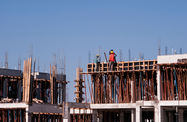A rising tide of investments and solid increases in arrivals are supporting high levels of growth in Bahrain’s tourism industry, with projections that expansion will be sustained to the end of the decade and beyond.

Tourism has become one of the main draws for foreign direct investment (FDI) in the Bahraini economy, attracting 75% of the $281m of inbound investments recorded last year, according to data issued by the Bahrain Economic Development Board (EDB) in mid-February.
By contrast, the manufacturing and logistics sectors drew a combined 14.3% of the total, while financial services – traditionally one of Bahrain’s strongest industries – made up 9.3%.
Total FDI inflows for 2016 were almost double the $142m posted the previous year, with 40 companies making investments throughout the year, up on 22 firms in 2015.
Tourism investment is set to rise further this year, with the EDB forecasting total FDI to the sector will exceed $300m, rising to $500m or more in the next few years.
The EDB has identified tourism, along with manufacturing, ICT, financial services and logistics, as being the five sectors that will underpin growth and development in the coming years, as well as being the most likely to attract FDI.
Earnings, footfall set to jump
Some investments in the tourism sector are flowing into the accommodation segment, with several new top-line hotels set to open over the course of 2017, adding to the 111 registered hotels currently in operation.
These projects include the 263-room, five-star Wyndham Grand Manama in Bahrain Bay, which is due to open in the second half of this year, and a One&Only Resort, which will add 150 rooms, along with villas and estates, to the Seef neighbourhood. The latter development will also feature a 1-ha manmade lagoon and is set to be delivered by Bahamas-based luxury resort developer Kerzner International and domestic real estate and hospitality firm Sevens Holding.
While new openings will expand room stock, forward estimates of sustained growth in the hospitality segment, supported by continued increases in visitor traffic, should ensure demand continues to balance supply.
“Looking forward, Bahrain is likely to continue benefitting from significant inflows of regional tourists, helped by an improving product offering and an increasingly stable or even positive regional outlook,” Sheikh Salman bin Isa Al Khalifa, chief executive of Bahrain International Circuit, told OBG.
Last year Bahrain attracted 12.3m overseas visitors, a 6% increase on the previous year, with state agencies forecasting an even sharper rate of growth in the years to come.
“The country is well on track to achieve its target of boosting visitor numbers to 15.2m and total tourism spending to BD1.9bn ($5bn) by 2018,” Sheikh Khaled bin Humood Al Khalifa, CEO of the Bahrain Tourism and Exhibition Authority (BTEA), told OBG.
According to Sheikh Khaled, the leisure segment’s contribution to the national economy will also increase significantly, rising from 4.6% in 2015 to 7% of non-oil GDP by 2018.
The industry and authorities are working to boost not only the number of visitors, but also the length of their stay. Currently, just 10% of tourists stay two nights or more, though with improved product offerings, along with reduced travel times and greater convenience, Bahraini officials aim to have up to 20% of visitors stay for multiple nights.
Infrastructure investments
Bahrain’s capacity to handle the expected increased flow of overseas visitors will be supported by investments in a series of infrastructure projects.
Foremost among these is the $1.1bn expansion of Bahrain International Airport, set for completion by 2020. The increase in passenger-handling facilities should see the airport’s capacity double to 14m, with a new terminal, landing slots and service buildings being constructed.
Another infrastructure development in the pipeline is the proposed second causeway linking Bahrain with Saudi Arabia, known as the King Hamad Causeway.
Bahrain and Saudi Arabia recently completed a feasibility study for the proposed transport link. As well as comprising four lanes for vehicles, the causeway is set to accommodate a rail line for freight and passenger trains, eventually connecting Bahrain with the wider GCC railway project via Saudi Arabia.
The existing causeway is a major gateway for Bahrain’s tourism industry, with some two-thirds of foreign arrivals, or 10.2m visitors, crossing from Saudi Arabia via the 25-km road and bridge connection.
The potential for faster overland travel times is expected to increase inbound tourism still further, while a new rail connection should improve access for visitors from Saudi Arabia, who must currently terminate at the rail station in Dammam before crossing the causeway by other means.


